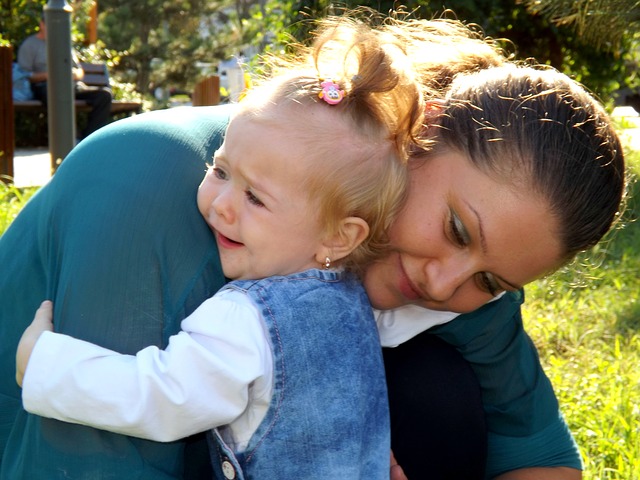As sweet as they are, our young ones can sometimes transform into little terrors, holding on stubbornly to what they want, crying and shouting, and simply refusing to listen to reason.

How can we handle these sudden meltdowns without getting into a fit? Here are 6 ways you can try to keep your cool.
1. Understand the deeper “why”
As irrational as we may think our young ones are, they actually do not throw a tantrum without reason. Go beyond, “Oh, she is just being stubborn!” or “He simply wants his own way!” Find out the deeper reason of why your little ones are upset. Perhaps it is a basic need you need to fulfil. Are they tired? Hungry? Or maybe they are feeling left out of a group, or feel they are not getting enough attention.
We may not be able to satisfy their every whim and fancy, but understanding the root cause behind their behaviour is a good place to start, and it calms us down by making us more empathetic. The best way to find out is to ask your child’s preschool teachers about the ongoing of their day.
2. Use distraction
You would have observed many grandparents do this. Whenever the child gets ‘fussy’, the grandparents create a distraction – from dangling sweets in front of them to talking about a totally irrelevant subject. There is much wisdom in that. There is no point in challenging your little ones once they decide to be difficult, and the best way may be to take their minds off the matter at hand.
For example, if your young one refuses to brush their teeth, you could start talking about something interesting that happened to you with a tag like ‘Did you know…’ and also brush their teeth in the process. They would probably be too absorbed in your story to realise that they had unwittingly given in. This way, you would not have to blow your top either.
3. Side-step the power struggle
When dealing with our child’s tantrums, we need to side-step the power struggle and not give in to our child’s invitation to engage in a battle of wills. For example, if your child insists on wearing slippers for your cousin’s wedding party, you could respond by saying, “Would you like to wear your favourite black shoes or the new white shoes to go with your grey top?”
You signal to your child that neither are you going to challenge them nor are you going to give in. You simply show you are in control of the situation. It also helps when you respond by giving another set of choices, not orders. In this way, your child will stop trying to challenge you.
4. Speak calmly
One trick to stop the urge to shout and scream at our seemingly unreasonable little ones is to speak to them slowly and calmly. Speaking in a soothing voice tells your child two things: you are not going to let their behaviour get to you, and secondly, the way to react when you are angry is to keep your cool and raise your voice. Speaking calmly may seem like an act at first, as you would probably be boiling inside.
5. Leave it be
As irresponsible as this may initially sound, if your child is throwing a tantrum at home, it may perhaps be wise to sometimes simply walk away – at least for a while. According to new research published in the journal Emotion, scientists have analysed children’s tantrums and found that in tantrums, anger and sadness come almost simultaneously. The way to handle a tantrum is to wait for the child to get past the peaks of anger, and respond only when sadness starts to set in.
Only after the child is done kicking and screaming in anger will they reach out for comfort. It is not easy to do nothing when there you hear screams and shouts initially, but if you can wait for your child’s anger to peak and past, you may find the experience more intriguing than infuriating.
6. Give a hug

If there is something that would not fail you – it is love. Giving your child a tight hug when they are having a moment can help both you and your child. It is no secret that gentle physical contact with another human being has the ability to calm one down. You may find that your little one may not always let you hug them and instead prefer to lie on the floor, flailing their hands and legs. That is okay too, as they would feel reassured of your love for them. This will help them calm down a little faster.
There are many ways to handle tantrums. Choose the approach that works best for you, and in time, you will slowly understand your child’s sudden outbursts better, and your child in turn, learns to slowly abandon the ruse of tantrums.
This article is contributed by MindChamps Singapore.
© MindChamps Singapore. All rights reserved.
* * * * *
Enjoyed reading this or learned something new? Click the Like and Share button below!
Want to be heard 👂 and seen 👀 by over 100,000 parents in Singapore? We can help! Leave your contact here and we’ll be in touch.


























































Leave a Comment: